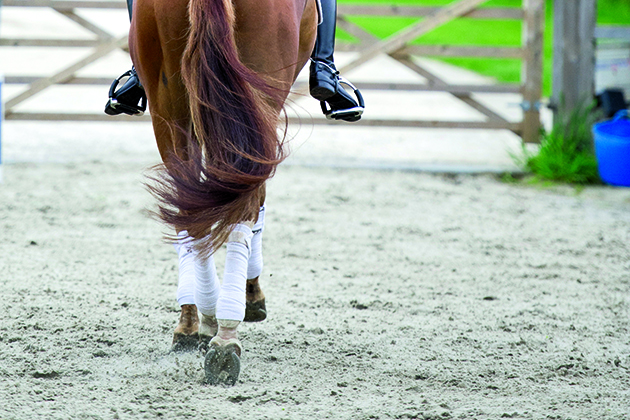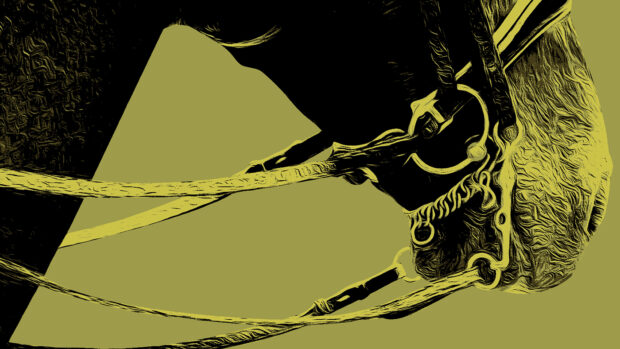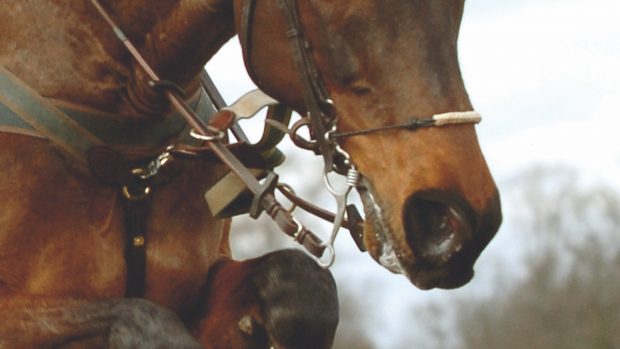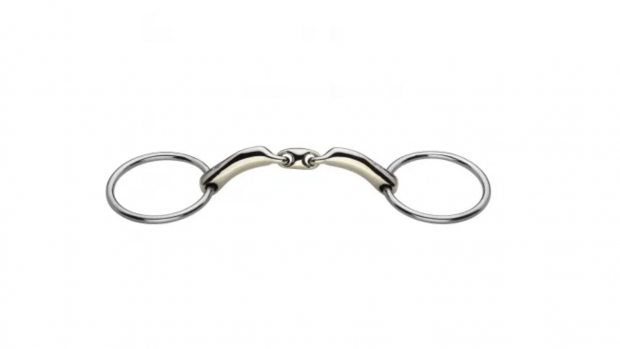Horses have been found to tolerate similar levels of rein tension whether they are wearing a bitless bridle or a traditional bridle, according to a recent study.
Findings of the research, ‘Horses’ voluntary acceptance of rein tension with various bitless bridles compared to a single-jointed snaffle bit’, were presented at the International Equitation Science Conference in Australia (25 November).
“In trying to use more welfare-friendly alternatives to conventional bridles, riders often resort to bitless bridles, but little is known about horses’ pressure sensitivity in the different body parts bitted and bitless bridles act on,” said the team of researchers from Germany.
“The aim of the study was to obtain information on how horses perceive the pressure exerted by various bitless bridles as compared to a regular snaffle bit.”
The 21 horses involved in the study were fitted in a random order with each of the four following bitless bridles: an LG bridle, sidepull, Dr Cook’s bitless bridle or Fred Rai Rope, a rope halter or a conventional bridle with a single-jointed snaffle bit.
Reins were fitted with a tension meter which was positioned to simulate the position of the rider’s hands.
The reins were adjusted to a length that allowed the horse to hold its head 5–10° in front of the vertical.
The horses were lured with food to encourage them to stretch forwards and downwards against the reins, while standing in a stable.
Testing was stopped after the horse stopped stretching for the food, and subsequently released the tension, or after a maximum of one minute.
This procedure was repeated for each horse three times per day, and the entire trial was repeated for each horse on three subsequent days.
Results
Horses applied similar amounts of maximum tension to all bridles, including the snaffle bit, with the exception of the sidepull, to which they applied less pressure.
But the maximum tension applied to the sidepull and the other bridles “did not differ significantly”.
“Results indicate that with the investigated headgear except for the sidepull […] the same amount of rein tension results in similar levels of discomfort in the horse,” said the researchers.
“Compared to the other bridles, the sidepull is equipped with a stiffer and thinner noseband, resulting in higher pressures on the horse’s nose, which explains the lower threshold of maximally tolerated rein tension for this bridle.
“This indicates that with the different types of headgear, the same rein aid is similarly aversive to horses, and at equal levels of prior training, signals of the same intensity are sufficient to produce a noticeable aid.”
You might also like:

Bitless bridles: What, why and how
Find out everything you need to know about bitless bridles

8 bitless bridles to consider if you’re thinking of making the switch

‘We have our way and they have theirs’: bitless rider’s dressage petition
The petition calls for a revision of dressage rules to allow bitless bridles at all levels

Rider calls for bitless bridles to be allowed in dressage
'Surely a bitless horse is no threat to a bitted horse when competing against each other?'

Subscribe to Horse & Hound magazine today – and enjoy unlimited website access all year round
Horse & Hound magazine, out every Thursday, is packed with all the latest news and reports, as well as interviews, specials, nostalgia, vet and training advice. Find how you can enjoy the magazine delivered to your door every week, plus options to upgrade your subscription to access our online service that brings you breaking news and reports as well as other benefits.




